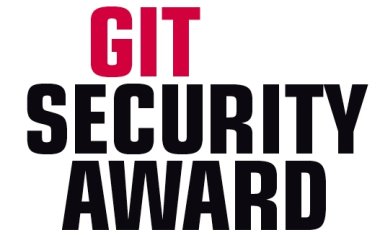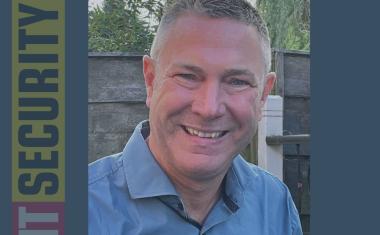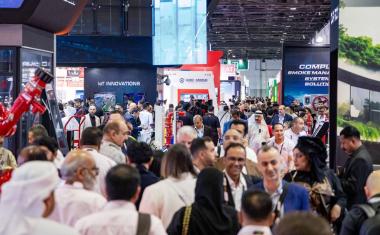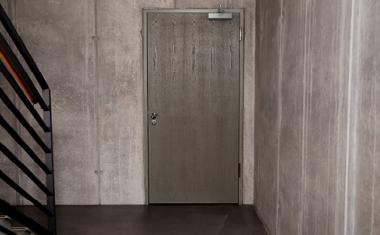Streamlining Access and Power Deployment
Security installations have long been plagued by hidden costs. Separate
power in access control systems mean extra labor, longer
deployment times, and expensive maintenance down the line. As
facilities expand, these inefficiencies compound, making even minor
system upgrades complex and costly. But cost isn’t the only concern.
Outdated access control infrastructure introduces vulnerabilities that
go beyond suboptimal performance and create security risks.
Ronnie Pennington, Director Sales for the Americas, Altronix Corp
The way forward is clear: access control must be designed as a unified, scalable system from the start. This means rethinking how power is integrated, how access control is deployed, and how security professionals can build infrastructure that is both resilient and adaptable.
For many, the challenge isn’t recognizing the need for change, it’s understanding how access control has evolved and what solutions exist to bridge the gap.
content:
- The Shift from Standalone to Integrated Access Control
- How Integrated Power and Access Solutions Optimize Performance
- Building Access Control Systems That Grow With Your Security Needs
- Choosing the Right Access Control Enclosures for Optimal Performance and Security
- Future-Ready Access Control Starts with Smarter Integration
The Shift from Standalone to Integrated Access Control

For years, access control systems operated in isolation. Doors, locks, and credentials functioned independently, while power distribution, networking, and management were handled separately. Security professionals had to navigate a maze of wiring, enclosures, and configurations just to get a system up and running. This fragmented approach created bottlenecks that made installations more complex, costly, and difficult to scale.
Modern security requirements go beyond simply controlling who can enter and exit a facility. Organizations need systems that integrate power, access control, and networking into a cohesive framework. Traditional access control setups often struggle to support the level of coordination and remote management that modern security environments require. A more integrated approach eliminates these pain points by streamlining installations, reducing labor costs, and improving overall system reliability.
Several key factors are driving this shift. Expanding security systems with outdated infrastructure is expensive and unsustainable. Each new door or access point requires additional power sources, separate enclosures, and complex wiring. These operational setbacks not only increase costs but also introduce vulnerabilities that can weaken security. As security threats evolve, organizations need real-time monitoring and system-wide coordination, which fragmented access control systems cannot easily support.
Advancements in power technology are also changing how access control is deployed. Power over Ethernet (PoE) has made it possible to distribute power and data through a single cable, reducing installation time and eliminating the need for separate electrical work. Remote power management solutions further enhance operational effectiveness by allowing security teams to monitor, diagnose, and manage power issues remotely. Pre-configured access control enclosures further simplify deployment by consolidating power and access components into a single system.
How Integrated Power and Access Solutions Optimize Performance
Security professionals often focus on the hardware and software components of access control, but the way these systems are powered plays an equally critical role. Installing access control solutions has traditionally been a time-intensive process, requiring separate enclosures for power and access devices, extensive wiring, and coordination between multiple teams. This fragmented approach not only increases labor costs but also introduces more potential points of failure.
Integrating power distribution and access control hardware into a single, pre-wired solution, streamline deployments and minimizes the risks associated with manual wiring. With fewer individual components to install and manage, the time required to bring a system online is significantly reduced, increasing your ROI.
Labor costs are a major factor in access control installations, often exceeding the cost of the hardware itself. Traditional installations require electricians and security integrators to spend hours or even days routing wires, configuring power supplies, and ensuring compliance with various electrical standards. Combining power and access hardware help cut down these costs by allowing security teams to deploy systems faster, with less specialized labor and fewer materials.
The benefits extend beyond installation. Integrated power and access control solutions also improve system resilience by reducing potential failure points. Backup power solutions, including automatic transfer switches, ensure uninterrupted security operations even during power outages. When power distribution and access components are designed to work together within a single enclosure, the risk of misconfigurations, voltage drops, or system downtime is significantly lower. In the event of maintenance or upgrades, technicians can access a centralized power and access control hub instead of troubleshooting across multiple locations.
As organizations scale their security infrastructure, adopting integrated solutions ensures that future expansions remain cost-effective and manageable while improving overall security continuity.
Building Access Control Systems That Grow With Your Security Needs
Most access control systems are designed for immediate needs, not long-term success. They work fine until expansion is required, then the cracks start to show. Each new door, reader, or access point demands additional power, separate enclosures, and complicated wiring, turning what should be a seamless upgrade into a costly, time-consuming project.
This piecemeal approach leads to higher costs, longer installation times, and inconsistent system performance. Modular access control solutions solve this problem by providing a flexible framework that can be expanded as needed. Pre-configured enclosures designed to accommodate multiple access control components allow security professionals to add doors, readers, and power supplies without overhauling the entire system. This approach not only reduces installation complexity but also ensures that future expansions are more cost-effective.
Scalability is especially important for multi-site organizations or facilities with evolving security needs. A standardized, modular access control system allows for consistent deployments across multiple locations while simplifying maintenance and upgrades. Instead of managing a patchwork of different access control systems, security teams can rely on an integrated solution that grows alongside their organization.
Choosing the Right Access Control Enclosures for Optimal Performance and Security
Most security teams focus on credentials, readers, and software when designing access control systems, but what about the infrastructure holding it all together? The wrong enclosure can turn even the most advanced security setup into a nightmare, complicating installations, increasing maintenance costs, and limiting future expansion. It’s a detail that often goes overlooked, yet it directly impacts system performance, reliability, and scalability. Without the right enclosure, organizations risk higher costs, process disruptions, and security gaps that could have been avoided from the start.
One of the most important considerations is facility size and scalability. Small businesses may require a compact enclosure that houses a few access control boards and power supplies for single or even 2-4 door systems, while larger enterprises need modular enclosures that can support multiple doors such as up to 24-doors with power and integrate seamlessly with existing infrastructure. Choosing an enclosure that can accommodate future growth prevents costly retrofits and system downtime when additional access points are needed.
The installation environment is another key factor. Outdoor facilities, industrial sites, and high-security locations require enclosures built to withstand harsh conditions, including extreme temperatures, moisture, and physical tampering. Enclosures designed for these environments offer reinforced construction, weatherproofing, and additional security features to ensure uninterrupted operation.
Compliance and safety certifications should not be ignored. Many industries have strict regulatory requirements for access control hardware, especially in sectors like healthcare, finance, and government. Using enclosures that meet UL, NDAA, and TAA standards ensures compliance while reducing the risk of liability. These certifications also indicate that the enclosure has been tested for safety, durability, and performance under real-world conditions.
Another major consideration is centralized versus distributed power management. Some facilities benefit from a centralized power source, where all access control devices are powered from a single, well-organized enclosure. Others require distributed power solutions, where smaller enclosures are strategically placed to reduce wiring complexity and optimize power distribution. The right approach depends on the size and layout of the facility, as well as the specific security requirements of the organization.
Future-Ready Access Control Starts with Smarter Integration
When access control and power integration are treated as an afterthought, scalability suffers. Organizations that plan ahead with unified, modular solutions can future-proof their security infrastructure by reducing system limitations, lowering costs, and ensuring seamless adaptability as their needs evolve.
By combining power and access control within a modular, pre-configured system, security professionals can reduce installation complexity, streamline upgrades, and ensure long-term reliability. Integrated solutions minimize failure points, eliminate unnecessary wiring, and make it easier to scale security infrastructure without costly overhauls. This approach not only improves operational effectiveness but also strengthens overall system resilience—ensuring continuous security operations even during power disruptions.
The future of access control isn’t just about keeping unauthorized individuals out. It’s about building a security infrastructure that can adapt, expand, and perform optimally for years to come. Choosing the right power and integration strategy today ensures that access control remains an asset, not a limitation, as security needs continue to grow.
Author: Ronnie Pennington, Director Sales for the Americas, Altronix Corp













